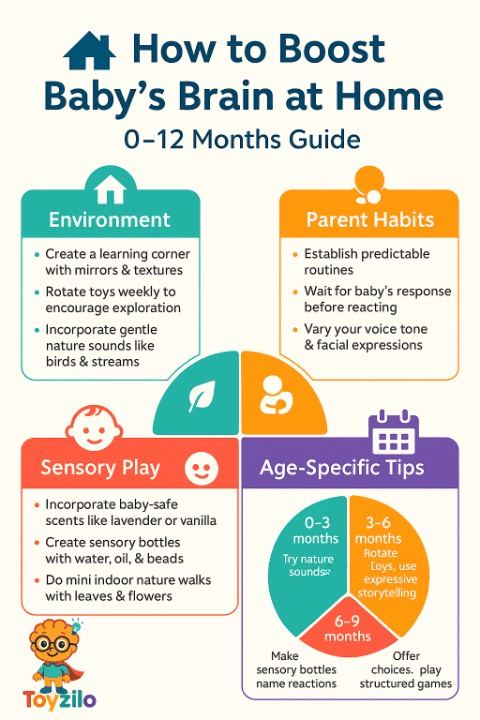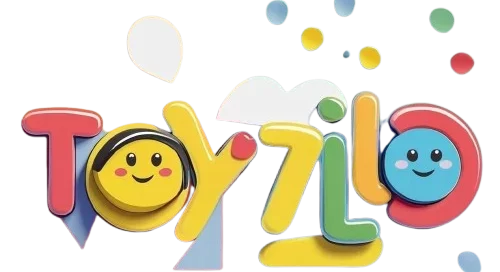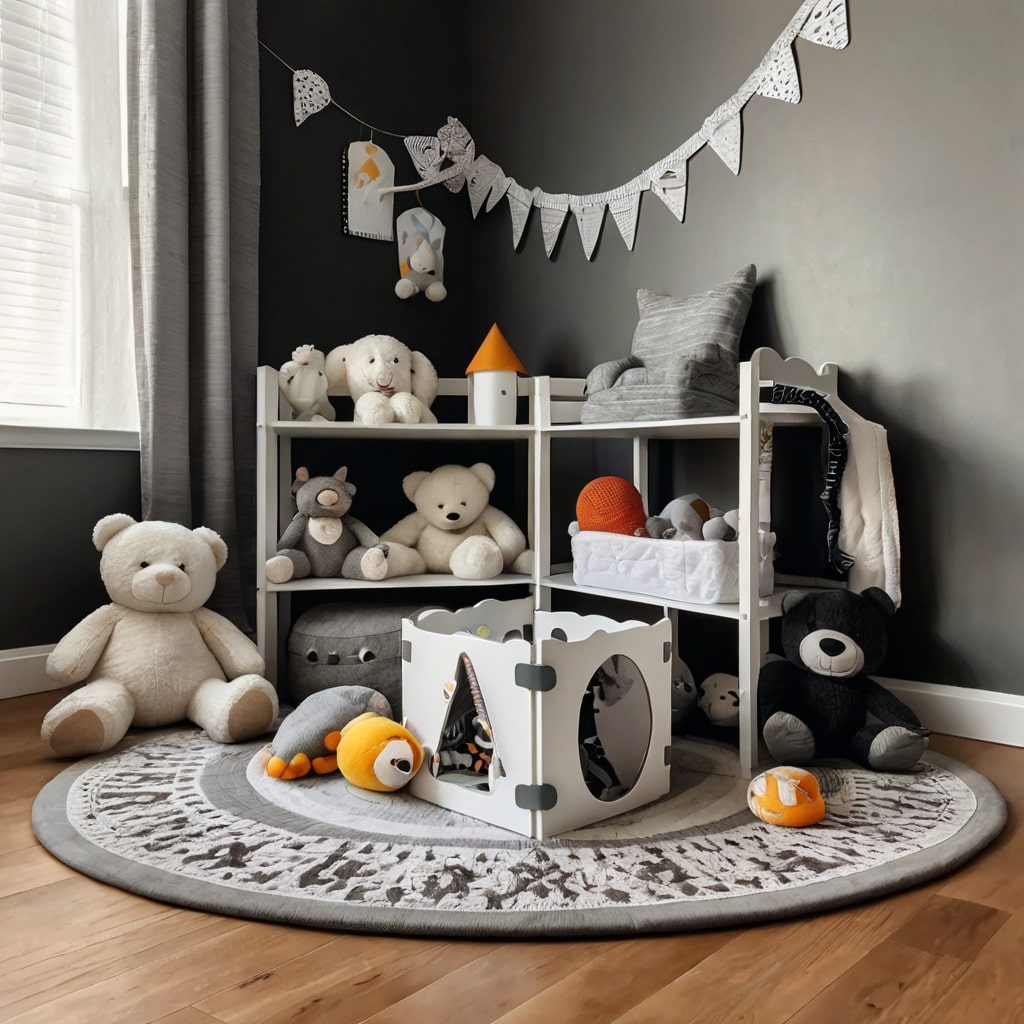The first year of a baby’s life is a time of wonder—and intense brain development. While you may already know the value of tummy time or talking to your baby, there’s so much more you can do to create a home that naturally supports your infant’s growing mind.
In this guide, we go beyond the basics to explore new, science-backed strategies you can start today to build your baby’s brain from the ground up.
🧠 How the Infant Brain Grows at Home
From birth to 12 months, your baby’s brain:
-
Triples in size
-
Builds more than 1 million neural connections per second
-
Is shaped by daily sensory and emotional experiences
You are not just changing diapers and singing lullabies—you are literally wiring their future.
🌿 Home Environment Hacks That Boost Baby’s Brain
1. Design a Stimulating “Learning Corner”
Create a cozy space with:
-
Safe mirrors
-
Textured cloth books
-
Color-changing lights or soft mobiles
This sensory zone encourages exploration and focus without over stimulation.
🔍 Boosts: Sensory Processing & Curiosity
2. Rotate Toys and Objects Weekly
Babies thrive on novelty and pattern recognition. Instead of adding more toys, simply rotate 3–5 items every week.
🔁 Keeps their attention fresh and encourages deep exploration of each object.
3. Incorporate Gentle Nature Sounds
Research shows natural ambient sounds (like birds, streams, or rustling leaves) help babies relax and improve auditory processing.
🎧 Try playing nature tracks during naps or nursing.
4. Use Baby-Safe Scents for Stimulation
The sense of smell is underused but deeply connected to memory and learning.
Try:
-
A drop of lavender (for calm)
-
Vanilla (for familiarity)
-
Citrus (for alertness)
✅ Always consult your pediatrician and use with proper dilution.

👫 Parent Habits That Fuel Brain Growth
5. Establish Predictable Routines
Simple routines (morning wake-up, bedtime rituals, bath time songs) help babies feel secure and begin to predict patterns—a key early cognitive skill.
🔁 Consistency builds a safe learning foundation.
6. Slow Down & Wait for Baby’s Response
After asking, smiling, or cooing—pause and wait. Give your baby time to process and respond.
⏱️ This supports executive function, attention span, and two-way communication.
7. Vary Your Voice Tone and Facial Expressions
Don’t just talk—be expressive. Surprise them with silly faces, excited voices, and soft whispers.
🎭 This builds social-emotional recognition and makes your voice more engaging.
8. Create a “No-Phone Zone” During Baby Time
Limit your screen time during interactions to increase eye contact and attention span in babies.
🚫 Babies notice when you’re distracted—and that impacts emotional and cognitive growth.
🌈 Creative Sensory Activities Beyond the Norm
9. DIY Sensory Bottles
Fill transparent bottles with:
-
Colored water + glitter
-
Dried rice + beads
-
Oil + water for lava effects
Shake them slowly and let your baby watch while describing what’s happening.
🔍 Boosts: Visual Tracking & Cause-Effect Thinking
10. Mini Indoor Nature Walks
Even indoors, let your baby touch safe leaves, petals, or water (supervised, of course). Describe each texture or smell.
🏡 This connects sensory exploration to language and builds early awareness of the world.
🧭 Age-Specific Brain Builders: 0–12 Months
| Age Range | New Strategies to Try |
|---|---|
| 0–3 Months | Nature sounds, smell-safe cloths, mirror gazing |
| 3–6 Months | Rotating toys, expressive storytelling, facial mimicry |
| 6–9 Months | Sensory bottles, routines with objects, name reactions |
| 9–12 Months | Indoor nature touch, structured games, choice offering |

✅ Takeaway for Parents
You don’t need to fill your day with scheduled activities. Brain-building happens in moments of love, curiosity, and connection. Whether it’s a smile, a routine bath, or a sensory walk around your living room—you are the most powerful tool in your baby’s development.



